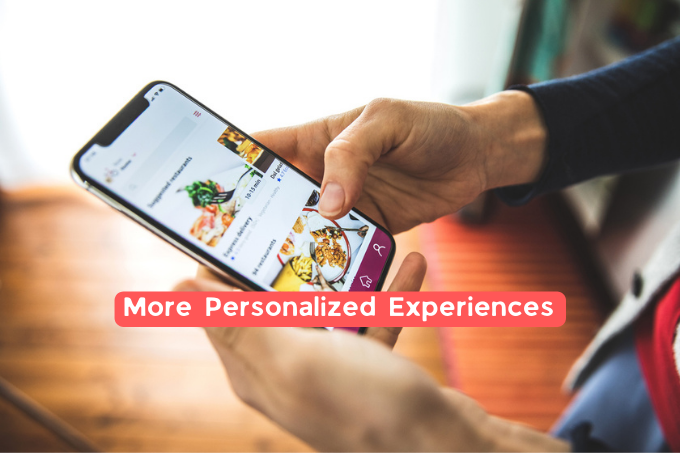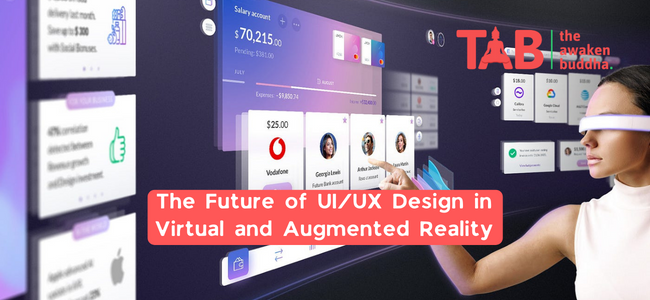The landscape of UI/UX design has evolved profoundly, propelled by the emergence of virtual and augmented reality (VR/AR) technologies. These immersive technologies are now at the forefront, ushering in a new UI/UX design era. This article delves into UI/UX design prospects within VR and AR, offering insights into the prevailing trends and the unique challenges and opportunities in this dynamic field.
Introduction
The advent of virtual and expanded reality has brought about a transformative shift in our digital interactions, elevating immersion and engagement to unprecedented levels. As VR and AR technologies gain widespread acceptance, the need for meticulously crafted UI/UX experiences is rising to provide users with a smooth and instinctive journey. In response, designers must remain in step with the ever-evolving trends and technologies, ensuring their creations remain pertinent and efficient within the VR/AR domain.
The Current State of UI/UX Design in VR/AR
UI/UX design within VR/AR is in its nascent stages. Numerous designers continue to wrestle with the intricacies of crafting experiences in a three-dimensional environment, where conventional design principles find limited applicability. Furthermore, a notable absence of standardized procedures in the design workflow adds to the complexity, making it a formidable challenge for designers striving to forge coherent and uniform interactions across diverse platforms and devices.
Notwithstanding these hurdles, notable progress has been made in UI/UX design for VR/AR. Many designers are venturing into uncharted territory, investigating fresh avenues of engaging with digital content, encompassing gesture-based controls, voice-activated commands, and eye-tracking mechanisms. These emerging input modalities promise to foster increasingly immersive and organic interactions, ultimately enhancing the intuitiveness and user-friendliness of the VR/AR experience.
The Future of UI/UX Design in VR/AR
The prospects for UI/UX design in VR/AR shine brightly, accompanied by a wave of emerging opportunities and evolving challenges propelled by advancing technology. Here’s a glimpse of the trends anticipated to shape the landscape in the years to come:
More Personalized Experiences

A fundamental benefit of VR/AR lies in its capacity to craft individualized user experiences. By harnessing the capabilities of AI and machine learning, designers can fashion interfaces that dynamically adjust to a user’s unique preferences, actions, and surroundings. This transformative capability ensures the user experience is finely tuned to each individual, enhancing engagement and relevance to unprecedented levels.
1. More Natural Interaction
As VR/AR technology progresses, we anticipate the emergence of increasingly natural and instinctive modes of interaction. While gesture-based controls, voice commands, and eye-tracking represent initial strides, the future holds the potential for brain-computer interfaces, enabling users to manipulate interfaces using their cognitive thoughts.
2. More Seamless Integration with the Physical World
One of the most thrilling prospects offered by VR/AR is the seamless fusion of digital content and the physical realm. Designers can craft AR experiences that superimpose digital information onto tangible objects or VR experiences that faithfully replicate real-world settings. This paves the way for fresh opportunities in fields such as education, training, and entertainment, where integrating these technologies can revolutionize how we learn, practice, and enjoy content.
3. More Standardization

As the VR/AR sector reaches a more advanced stage of development, we anticipate a greater degree of standardization in the design workflow. Such standardization efforts will simplify the task for designers, enabling them to fashion uniform and coherent experiences spanning various platforms and devices, thereby enhancing the overall quality of the user experience.
The Challenges of UI/UX Design in VR/AR
While the future of UI/UX design in VR/AR is filled with promise, it is accompanied by notable obstacles that designers must surmount. Here are some of the foremost challenges:
1. Designing for 3D Space
Designing within a 3D space represents a substantial departure from conventional 2D design. Designers must grasp the intricacies of depth, scale, and perspective and their profound influence on the user experience. Furthermore, they must contemplate how users will engage with objects in this three-dimensional environment, demanding a distinct approach to the design process.
2. Balancing Immersion and Accessibility
Although VR/AR delivers heightened immersion, designers face the crucial task of harmonizing this with accessibility. It’s important to acknowledge that not all users may possess the requisite technology or feel at ease with the degree of immersion offered by VR/AR. Designers must conscientiously factor in the requirements of all users and guarantee that their designs are inclusive.
3. Ensuring Performance and Compatibility
VR/AR applications demand robust performance and compatibility across diverse hardware and software setups. Designers must consider these critical factors during the design process, ensuring their creations are finely tuned for optimal performance and compatibility with various devices.
Conclusion
The UI/UX design outlook in VR/AR is brimming with promise, characterized by a continuous influx of novel technologies and prospects. Despite the hurdles designers must navigate, the potential advantages of skillfully crafted VR/AR experiences are substantial. As the industry undergoes rapid transformation, designers must remain vigilant, staying abreast of the most recent trends and technologies to ensure the pertinence and efficacy of their designs within this thrilling new era of UI/UX design.
FAQs
1. What is the difference between VR and AR?
VR (Virtual Reality) is a technology that simulates an utterly immersive environment entirely separate from the real world. AR (Augmented Reality) is automation that overlays digital content in the real world.
2. What are some examples of VR/AR applications?
VR/AR has many applications, including gaming, education, training, and simulation.
3. What are some benefits of well-designed VR/AR experiences?
Well-designed VR/AR experiences can provide a more immersive and engaging experience tailored to the user’s preferences and context.
4. What are some challenges of designing for VR/AR?
Designing for VR/AR requires a different approach than designing for 2D interfaces. Designers must consider the principles of depth, scale, and perspective and how the user will interact with objects in a 3D space.
5. How can designers ensure their VR/AR designs are inclusive?
Designers need to consider the needs of all users and ensure that their designs are optimized for performance and compatible with a wide range of devices. They also need to balance immersion with accessibility, considering the needs of users who may not have access to the necessary technology or may not be comfortable with the level of immersion that VR/AR provides.










